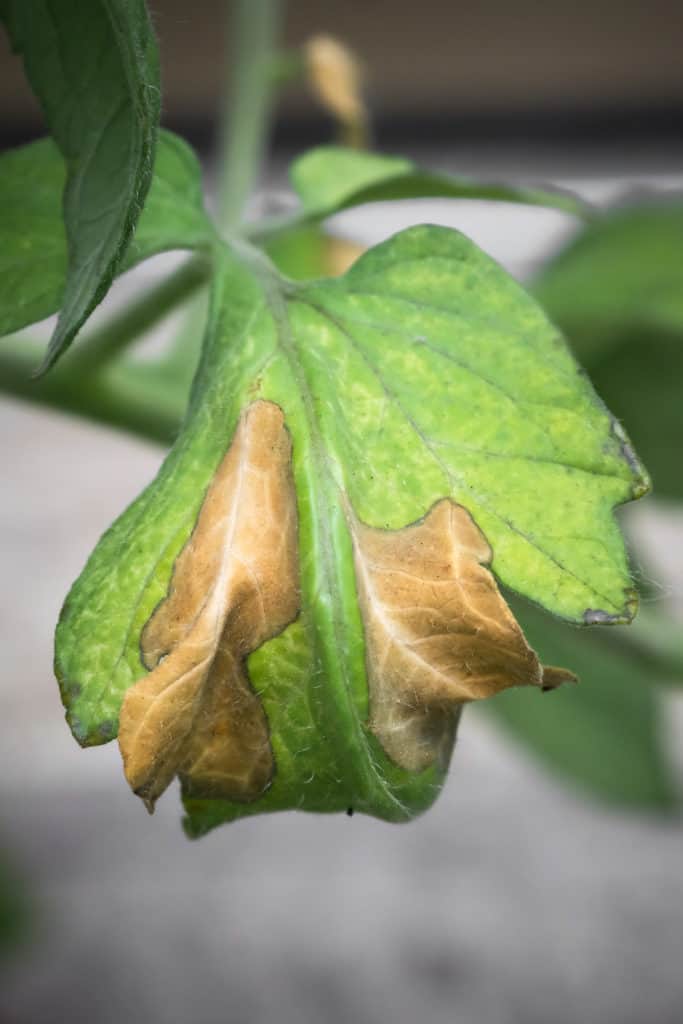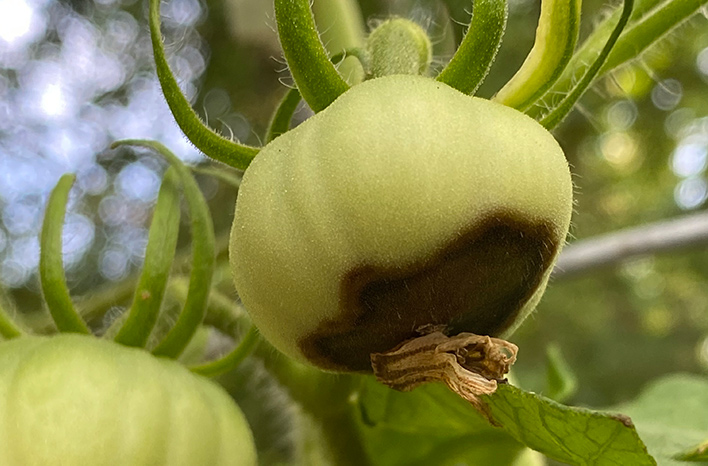To protect tomato plants from extreme heat, water regularly and provide shade using a cloth or shade net. Proper watering and shading are essential for protecting tomato plants from excessive heat.
Tomato plants are susceptible to damage from extreme heat, which can cause wilting, fruit drop, and reduced yield. In order to protect tomato plants from the adverse effects of high temperatures, it is important to take certain measures. One of the most important steps is to ensure regular watering.
Tomato plants require consistent hydration to withstand hot weather, so water them deeply and frequently, particularly during heatwaves. In addition to watering, providing shade can also help to protect the plants. Use a cloth or shade net to create a shelter that reduces the direct exposure of the plants to the sun’s rays. By implementing these strategies, you can safeguard your tomato plants from extreme heat and ensure a healthy and bountiful harvest.

Credit: www.tomatobible.com
How to Protect Tomato Plants from Extreme Heat: Step by Step Guide
Shade And Shelter Options For Tomato Plants
Protecting tomato plants from extreme heat is crucial for their health and productivity. Mulching with straw or leaves helps regulate soil temperature and retain moisture. Using shading covers or screens offers protection from direct sunlight and excessive heat. Building a temporary shade structure can provide shelter during the hottest parts of the day.
Creating windbreaks with fences or plants helps reduce the impact of hot, dry winds on tomato plants. Placing potted plants strategically around the tomato plants can create additional shade and protection. By implementing these shade and shelter options, tomato plants will have a better chance of surviving and thriving in extreme heat conditions.
Watering Techniques During Extreme Heat
Watering tomato plants properly during extreme heat is crucial for their survival. Deep watering less frequently helps them develop deep root systems, allowing them to withstand the heat. It is best to water early in the morning or late in the evening when temperatures are cooler.
Drip irrigation or soaker hoses are ideal for delivering water directly to the roots, minimizing evaporation. Monitoring the moisture levels using a moisture meter is essential to avoid overwatering or underwatering. Overhead watering should be avoided as it can increase the risk of disease and fungal growth.
By following these watering techniques, tomato plants can be protected from extreme heat and thrive in even the harshest of conditions.
Optimizing Soil Conditions For Heat Protection
Protecting tomato plants from extreme heat is crucial for their healthy growth and productivity. One way to optimize soil conditions for heat protection is by amending it with organic matter. Adding mulch around the plants helps to retain moisture and keep the soil cool.
It is also important to maintain proper soil ph levels, as tomatoes prefer slightly acidic conditions. Ensuring adequate drainage is essential to prevent waterlogged soil, which can lead to root rot. Another effective technique is to use reflective mulch, such as silver or aluminum-coated plastic, to reflect excess heat away from the plants.
By following these guidelines, you can create a favorable environment for your tomato plants to thrive even in periods of extreme heat.
Proper Plant Care Practices For Heat Stress Prevention
Proper plant care practices play a crucial role in protecting tomato plants from extreme heat. To prevent heat stress, one effective method is pruning tomato plants to enhance airflow. Staking or caging the plants provides necessary support as they grow.
Removing suckers and lower leaves helps redirect energy to fruit production. Applying organic fertilizers can improve stress resistance in tomato plants. Regular monitoring for pests and diseases ensures timely intervention and prevents further damage. By implementing these strategies, gardeners can safeguard their tomato plants from the adverse effects of extreme heat, promoting healthy growth and maximizing yield potential.
Frequently Asked Questions Of How To Protect Tomato Plants From Extreme Heat
How Does Extreme Heat Affect Tomato Plants?
Extreme heat can cause stress to tomato plants, leading to wilting, reduced fruit production, and even death. The high temperatures can disrupt the plant’s ability to absorb water and nutrients, causing dehydration and nutrient deficiency. It is important to protect tomato plants from extreme heat to ensure their health and productivity.
What Are Some Signs Of Heat Stress In Tomato Plants?
Heat stress in tomato plants can manifest through wilting leaves, dried-out soil, and discolored or scorched foliage. The leaves may curl or become yellow, and the plant may stop producing flowers or fruits. Providing shade, proper watering, and mulching can help alleviate heat stress and promote tomato plant health.

How Can I Protect My Tomato Plants From Extreme Heat?
To protect tomato plants from extreme heat, you can provide shade using shade cloths or structures, mulch the soil to retain moisture and control temperature, water deeply and regularly (early morning or late evening), and use organic matter to improve soil fertility.
These measures will help mitigate the effects of extreme heat and keep your tomato plants healthy.
Conclusion
To ensure your tomato plants survive the scorching heat, there are several measures you can take. Firstly, provide sufficient watering to keep the soil moist and prevent the plants from drying out. Mulching can also help retain moisture and regulate soil temperature.
Additionally, shading your plants with a lightweight cloth or using shade structures can protect them from direct sun exposure. Regularly inspect your plants for signs of stress, such as wilting or yellowing leaves, and take immediate action. Pruning excessive foliage and providing adequate airflow can prevent heat-related diseases.
Finally, consider choosing heat-tolerant tomato varieties for better chances of success. By following these tips, you’ll be well-prepared to protect your tomato plants from extreme heat, ensuring a bountiful harvest for you to enjoy.

